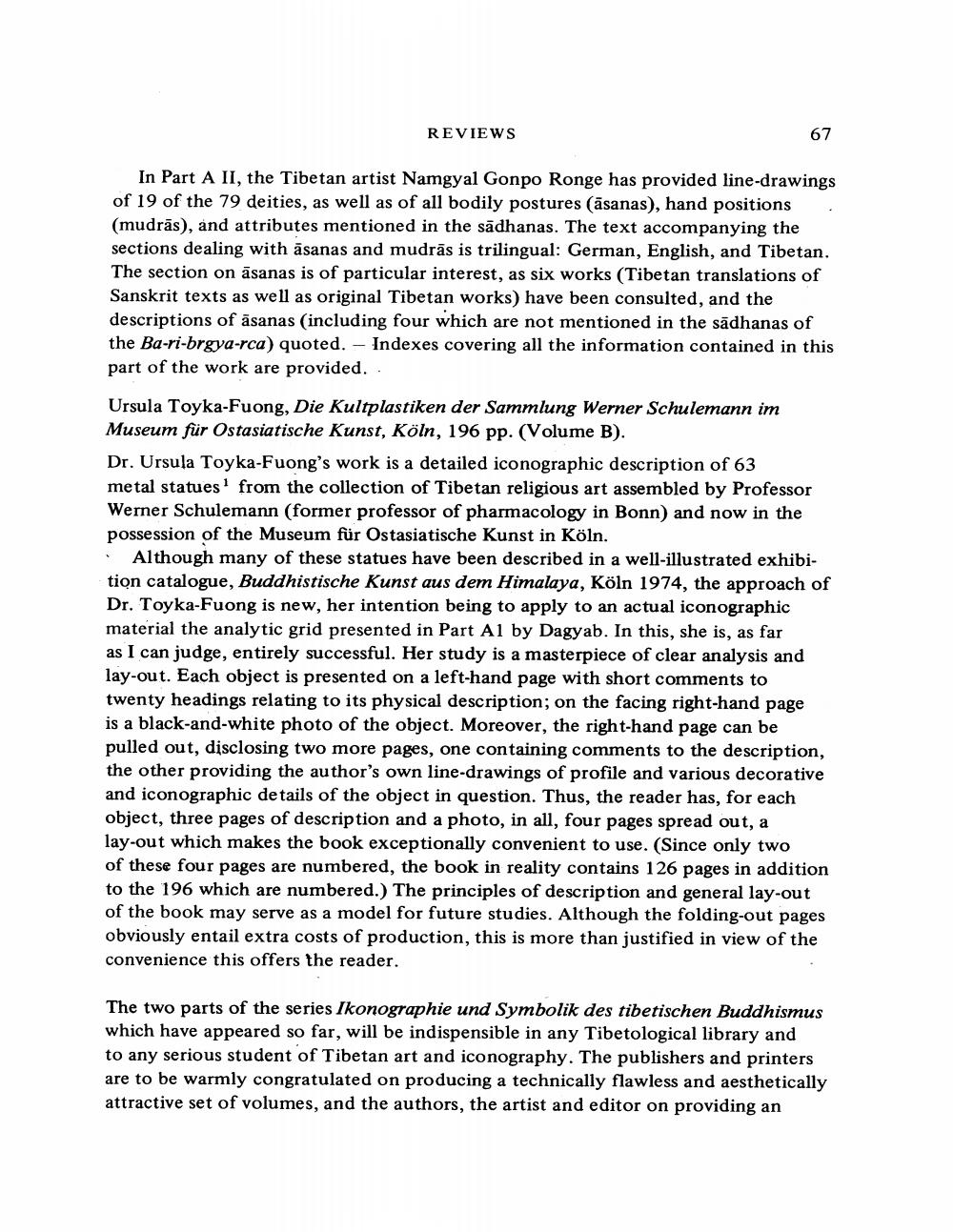Book Title: Book Reviews Author(s): J W De Jong Publisher: J W De Jong View full book textPage 1
________________ REVIEWS 67 In Part A II, the Tibetan artist Namgyal Gonpo Ronge has provided line-drawings of 19 of the 79 deities, as well as of all bodily postures (āsanas), hand positions (mudrās), and attributes mentioned in the sādhanas. The text accompanying the sections dealing with asanas and mudrās is trilingual: German, English, and Tibetan. The section on asanas is of particular interest, as six works (Tibetan translations of Sanskrit texts as well as original Tibetan works) have been consulted, and the descriptions of asanas (including four which are not mentioned in the sādhanas of the Ba-ri-brgya-rca) quoted. - Indexes covering all the information contained in this part of the work are provided.. Ursula Toyka-Fuong, Die Kultplastiken der Sammlung Werner Schulemann im Museum für Ostasiatische Kunst, Köln, 196 pp. (Volume B). Dr. Ursula Toyka-Fuong's work is a detailed iconographic description of 63 metal statues from the collection of Tibetan religious art assembled by Professor Werner Schulemann (former professor of pharmacology in Bonn) and now in the possession of the Museum für Ostasiatische Kunst in Köln. . Although many of these statues have been described in a well-illustrated exhibition catalogue, Buddhistische Kunst aus dem Himalaya, Köln 1974, the approach of Dr. Toyka-Fuong is new, her intention being to apply to an actual iconographic material the analytic grid presented in Part A1 by Dagyab. In this, she is, as far as I can judge, entirely successful. Her study is a masterpiece of clear analysis and lay-out. Each object is presented on a left-hand page with short comments to twenty headings relating to its physical description; on the facing right-hand page is a black-and-white photo of the object. Moreover, the right-hand page can be pulled out, disclosing two more pages, one containing comments to the description, the other providing the author's own line-drawings of profile and various decorative and iconographic details of the object in question. Thus, the reader has, for each object, three pages of description and a photo, in all, four pages spread out, a lay-out which makes the book exceptionally convenient to use. (Since only two of these four pages are numbered, the book in reality contains 126 pages in addition to the 196 which are numbered.) The principles of description and general lay-out of the book may serve as a model for future studies. Although the folding-out pages obviously entail extra costs of production, this is more than justified in view of the convenience this offers the reader. The two parts of the series Ikonographie und Symbolik des tibetischen Buddhismus which have appeared so far, will be indispensible in any Tibetological library and to any serious student of Tibetan art and iconography. The publishers and printers are to be warmly congratulated on producing a technically flawless and aesthetically attractive set of volumes, and the authors, the artist and editor on providing anPage Navigation
1 2 3 4 5 6 7 8 9 10 11 12 ... 48
